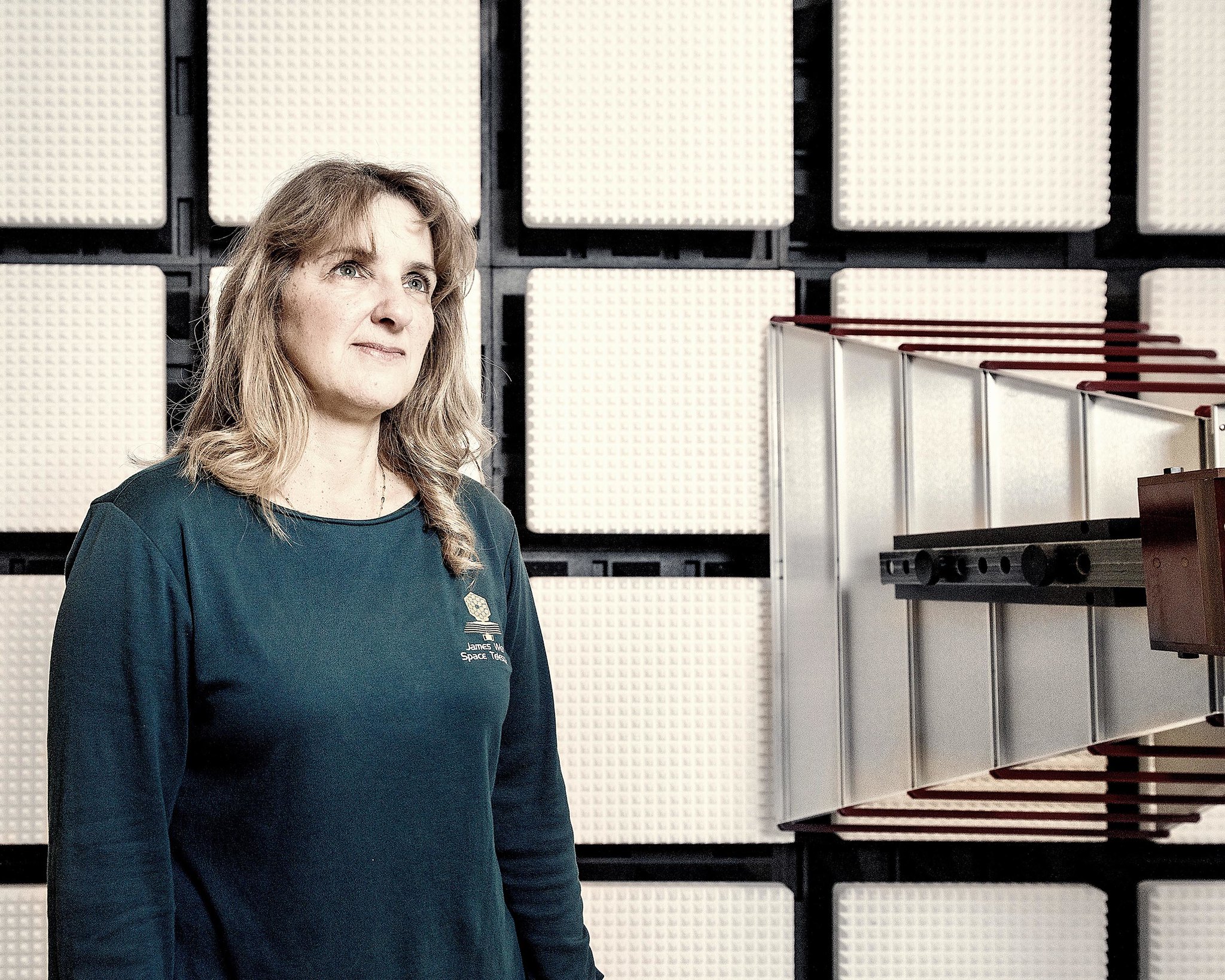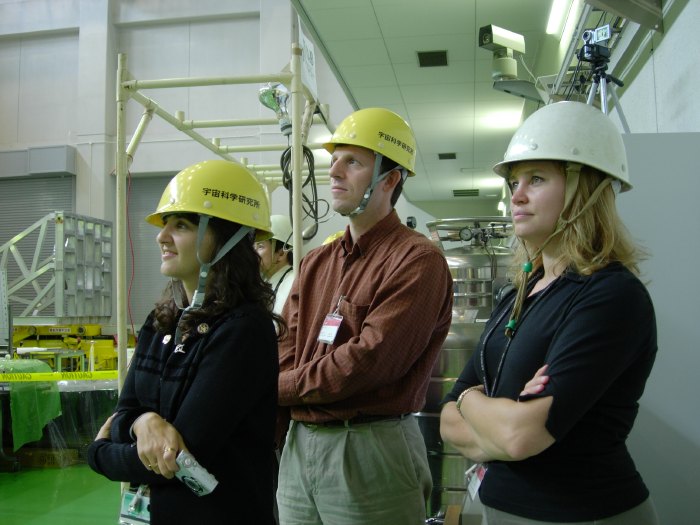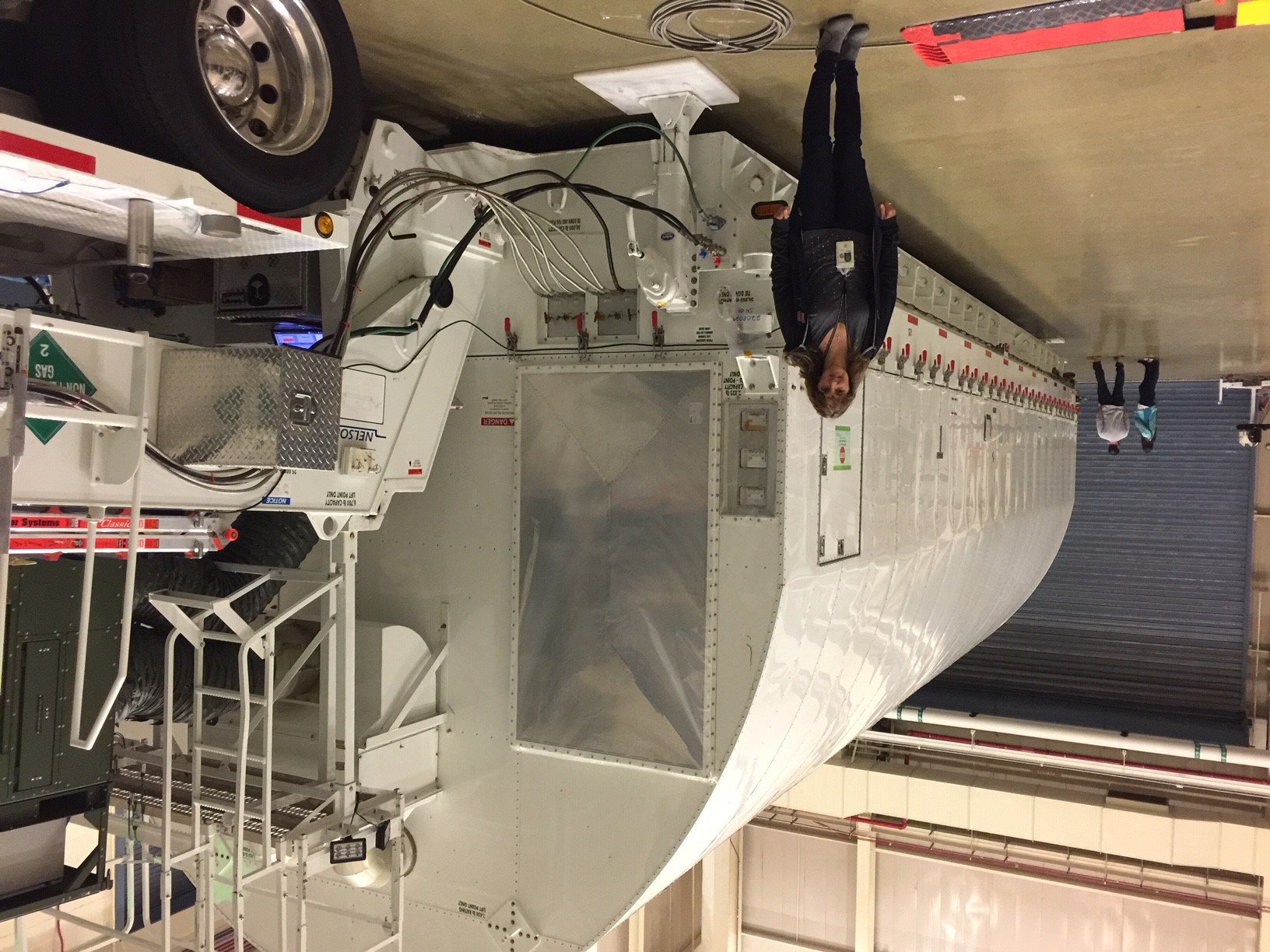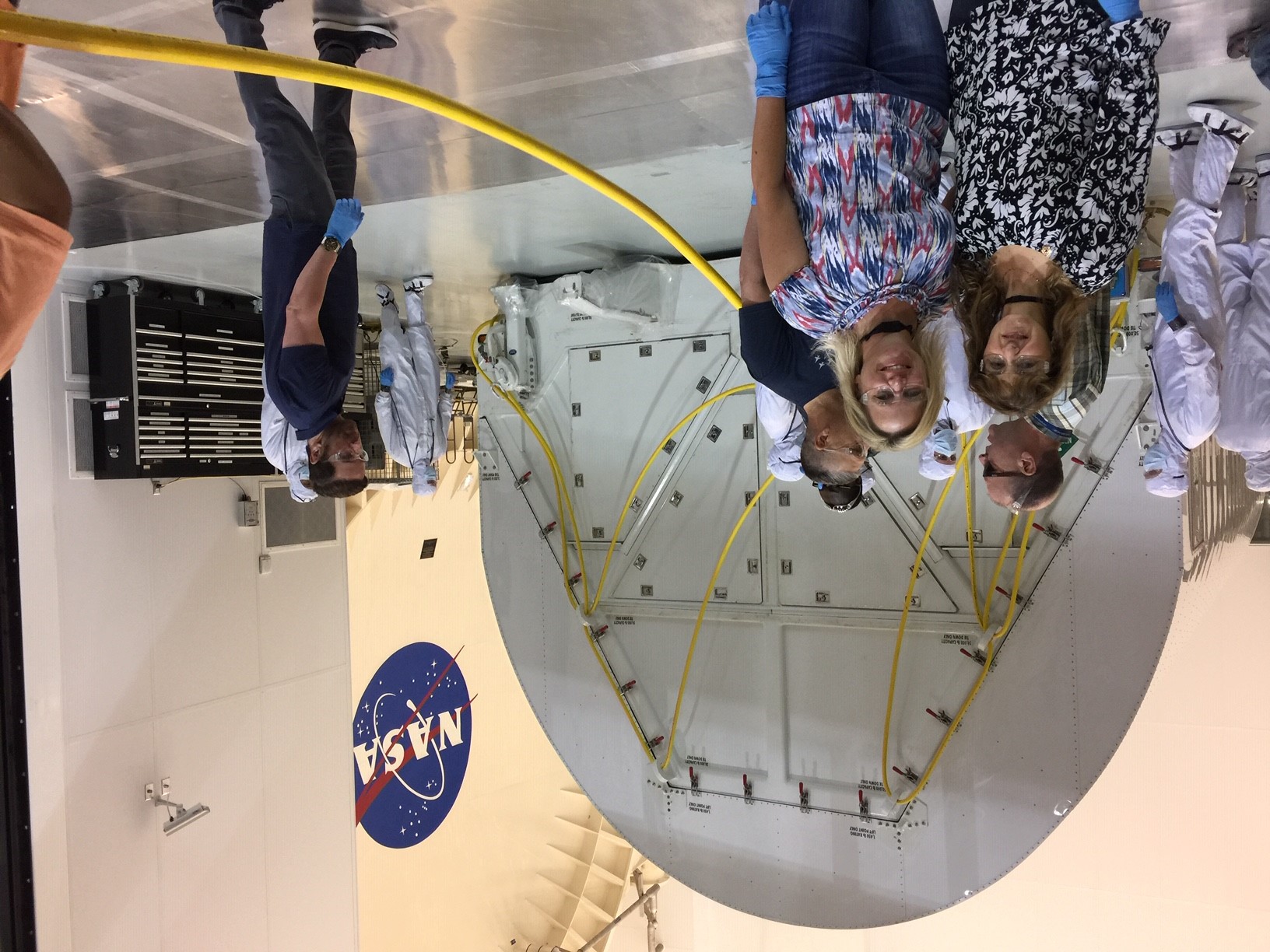We are highlighting Sandra Irish, Aerospace Engineer, in honor of Italian American Heritage Month which runs through the month of October 2020.
Name: Sandra Irish
Title: Lead Structures Engineer for James Webb Space Telescope
Formal Job Classification: Aerospace Engineer
Organization: Code 542, Mechanical Systems and Analysis Simulation Branch, Engineering and Technology Directorate
What do you do and what is most interesting about your role here at Goddard? How do you help support Goddard’s mission?
I have two jobs. As the lead structures engineer for NASA’s James Webb Space Telescope, I am responsible for mechanical analysis and testing for launch and on-orbit mechanical performance. I am also the mechanical systems group leader in the Mechanical Systems Analysis and Simulation Branch (Code 542) .
What do you do as the lead structures engineer for the Webb telescope?
I lead a group of 12 engineers working together to perform mechanical analysis to determine if the observatory’s mechanical design is acceptable to survive launch on the Arianne 5 rocket and to perform in an on-orbit environment. I report our progress to the lead mechanical systems engineer and the mission systems engineer.
My job has phases. We start with the analysis to determine if the design is acceptable. Then we account for any changes made during manufacturing and integration. We then are responsible for the mechanical testing that verifies if the design is acceptable.
My work is like a circle. We have to go through all phases, complete the circle, to be successful.
What is your role as the mechanical systems group lead?
I provide expertise in mechanical systems analysis to support the branch to build up our tools and advance our analysis concepts. I essentially provide mechanical system analysis consultations to our engineers.
Why did you become an engineer and what is your educational background?
I was always very creative growing up and liked arts, crafts and making things with my hands. My father was an auto body repairman and showed me how to fix cars while I was young. He was a big influence in my career choice.
In high school, math was my favorite subject. I loved math! My father took our family to many different airports to watch the planes take off and land and talk about the airplanes. I thought airplanes were miracles in the sky.
I wanted to be an airplane pilot, but I did not meet the physical requirements. A neighbor was an engineer and he advised me to become an aerospace engineer. Even though I could not fly a plane, I knew I could design one. So my senior year in high school I decided to become an aerospace engineer.
What is your educational background?
I have a Bachelor of Science in aerospace engineering from the University of Maryland.
How did you come to work at Goddard?
My senior year at college, I took a vibrations class. The professor, Dr. William Case, worked here at Goddard. I loved the class and I was performing very well. He asked me if I wanted to interview for a job with his group at Goddard and I did. After graduation, I went to work for him. I have been working for this same group for over 37 years!
He was such a wonderful mentor to me for so many years that I invited him to the Webb telescope’s friends and family day. He came and supported me and was amazed by the telescope. He is such a brilliant and kind person and I have been lucky to have his support in my career.
What makes a good manager?
The key is listening and understanding, asking questions to get the whole story. And patience.
Also, it helps to know the strengths of everyone on your team and also their personality. Some like to work alone, some like to bounce ideas off others. Everyone is different, so I have to treat everyone according to his or her preference to make the team work well together. It’s important to allow each person to be who they are most comfortable and express their thoughts in their own way.
Please tell us about how you organized and help lead the Woman Engineers in Space and Technology (WEST) Committee at Goddard.
I was the Code 500 representative to the Goddard’s Women’s Advisory Committee. An early career woman from Code 546 came to me asking about forming a group to support women engineers. I thought this was a great idea! This amazing woman is Nithin Abraham, who is now the president of the Code 500 WEST group. It took us two years to organize this new committee, but we were able to formulate this group, and it’s been going strong for the past two and a half years! I am happy to serve as cabinet member of this group.
WEST offers networking, training and social activities supporting women engineers. We are open to everyone at Goddard, not just engineers or women. We have over 145 members.
We have at least one event every month including our annual “May the Fourth Be with You” BBQ on center. Everyone comes in costume and it’s great fun. We also have training and panel discussions throughout the year. In addition, we have a monthly book club including fiction and nonfiction book discussions. We also have four general meetings a year where we showcase an engineer on center.
When I started work as an engineer, there were few women in the field. The people who mentored and advocated for me really helped me. Mentoring and advocating for women in engineering is very important to me. I especially enjoy working with our early career engineers, helping them with their mechanical analyses and advancing their careers.
I would encourage women engineers to continue in their engineering careers. It has been a great career for me. I love my job. WEST is here to support you.
Who are WEST’s champions?
WEST is sponsored by Code 500’s Diversity and Inclusion Committee and the Goddard Equal Employment Opportunity Office. Our champions are Jeff Bolognese and Dan Krieger. We are very grateful and thankful for their support. Without them, we would not exist and be able to sponsor events on center.
What are some of your career highlights?
The first was mechanical testing in Japan. Around 2000, I was working on Astro-E. We were testing in Japan with the Japan Aerospace Exploration Agency (JAXA) because our instrument was on the observatory. I was part of a four-person American team and we got to work with lots of different people. We even met the prince and princess of Japan. I was especially thrilled when JAXA put a photo of the prince and princess of Japan with our American team on the cover of their magazine. I have been to Japan five times for two different missions.
My second highlight was testing the Webb telescope at Goddard from November 2016 to March 2017. This is the biggest and most complex hardware Goddard has every tested. I was involved in the mechanical testing of the telescope. I led an international team of mechanical dynamics engineers. We worked long days for months to successfully test the telescope. It was an amazing campaign going through vibration and acoustic testing and I was grateful to the amazing group of talented dynamics engineers that I worked with each day.
My third coolest thing was being on Italian national news, RAI, in 2016. They interviewed me about my work on Webb. My family is Italian and my mother and my relatives in Italy all watch RAI. Actually, my mother saw the interview on TV before I did! Also, my relatives in Italy also saw me on TV. It was very excited to be able to share my work with my family and Mom was so excited for me as well!
My fourth coolest thing was when Joe Palca of NPR interviewed me in 2018. We were transporting the Webb telescope from NASA’s Johnson Space Center in Houston to California. I was quite excited about the work that my team and I performed to ensure a safe transport of the telescope and I explained that to Joe. Then-Center Director Chris Scolese contacted me after he heard me on NPR, which was an amazing honor for me to be recognized by our center director.
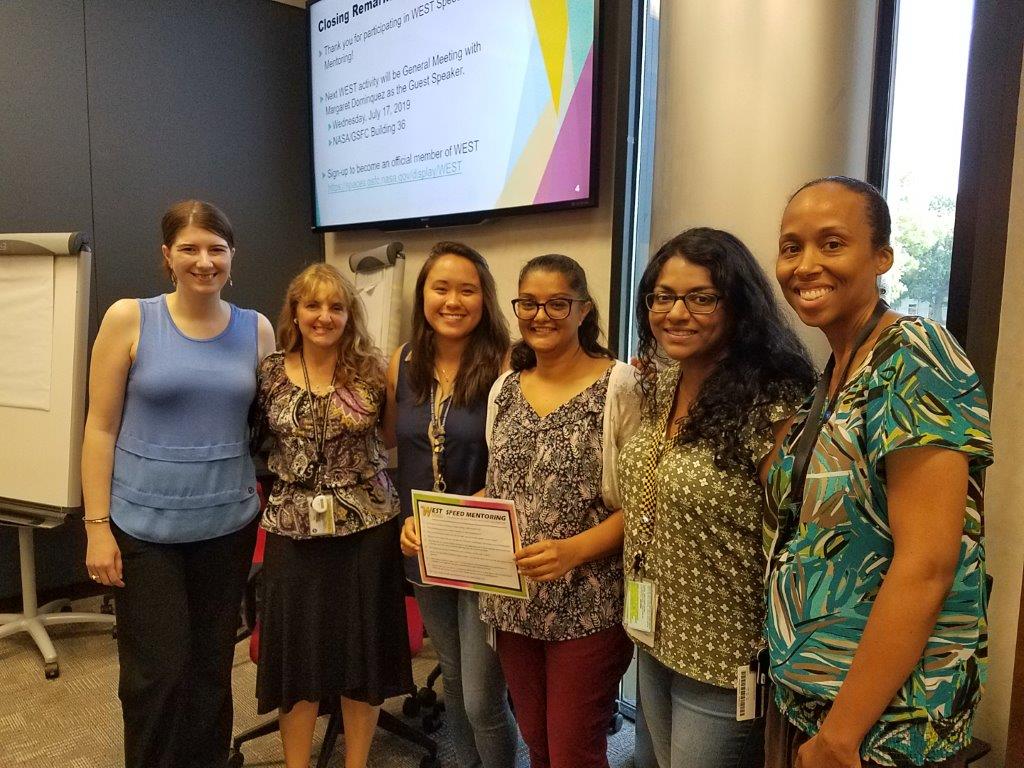
What do you say when people ask why you stayed in essentially the same job for 37 years?
I am learning something new all the time. Every task, every project is a new and different challenge.
Is there something surprising about your hobbies outside of work that people do not generally know?
I have a passion for soccer. I used to coach my kids and now I’m a big D.C. United fan! It’s a team sport, working together to achieve a common gooooooooal!
Also, I have danced since I was 5 years old. When I was about 13, I danced in a show at the Atlantic City pier. My dance team did two shows a day for a week and I was exhausted. This was before the casinos. I danced tap, ballet and jazz and was on the modern dance team though high school. I took dance classes in college. After college, I did aerobics and then, after marriage, I did ballroom dancing. Now I do Bollywood dancing and square dancing every week. In January 2020, I was certified as a Mainstream square dancer. Dancing helps coordinate the mind with the body, which actually relaxes me!
Also, for the past 12 years, I’ve taught Catholic Confirmation classes to seventh and eighth graders at our church. I am also a youth group counselor and go on mission trips with our church. We have helped a Catholic Parish in Philadelphia for the past few years. I work with second and third graders in a low-income area of North Philadelphia. I enjoy working with the kids on science experiments, Bible lessons, doing crafts, and playing soccer on the playground. They also teach me the new popular dance moves!
I love flowers. My husband and I grow orchids. We have quite a few orchids and also love to garden outside.
What is your personal motto?
My grandfather taught me to strive to learn something new every day. I taught my children this as well.
What is your advice for others?
I try to volunteer often. It helps me live on the edge of my comfort zone, which is where things really happen and change. I tell people that if there is an activity that could use your help, then volunteer. That is where your life will change, where you will find opportunities. I have done many wonderful things because I volunteered.
What is your “six-word memoir”? A six-word memoir describes something in just six words.
Learn, Love, Pray, Dance, Experience Joy!

By Elizabeth M. Jarrell
NASA Goddard Space Flight Center





























